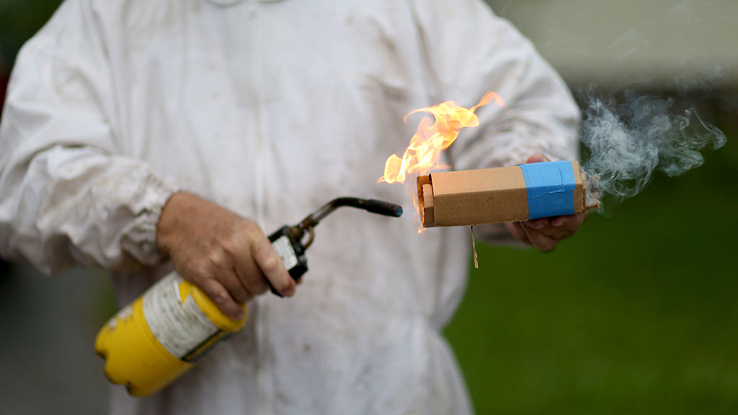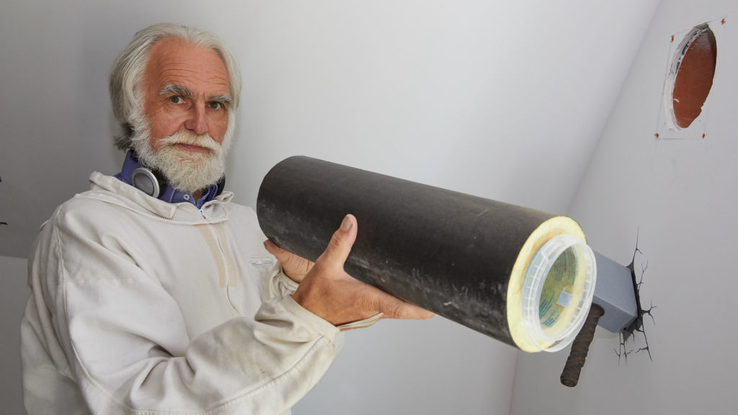How Much Does Bee Removal Cost?

Bees are an essential part of the environment. Through pollination, they’re responsible for somewhere around 30 percent of the global food supply and a whopping 90 percent of land plants overall. However, sometimes bees move into houses and other human spaces, posing a threat to people and property alike. Bees should be removed quickly from places where they’re a threat, but people may be reluctant to do so if they they think it will cost them an arm and a leg.
The truth is that the cost of bee removal can vary greatly. While average prices tend to hover around a few hundred dollars, you could end up paying as much as $2,000 or as little as nothing at all depending on where you live, what sort of bee problem you have, who does the removal and where the beehive has been set up. To fully understand the nature of your bee problem and what removal of the hive might cost, there are a few factors to be aware of.
Why Are Bees Sometimes a Problem?
Most of the time, bees are lovely to have around. However, as great as they are for the environment and people’s gardens, they can be a serious hazard. Unfortunately, bees can build hives in your home or on your property where they become a problem.

People with allergies may need hospitalization and could potentially even die from bee stings, while bees that try to set up a hive inside a house could cost expensive structural damage to your home. Over time, beehives and the honeycomb within can build pressure on walls, support beams and other parts of your house, while the honey can leave long-lasting stains, create an unpleasant odor and attract other unwanted critters.
Why Do I Need a Bee Removal Service?
While you may be tempted to take care of removal on your own, in most cases, it’s best to leave things to the experts when a hive is set up in your house. It’s easy for amateurs to make mistakes that cause the situation to become worse, such as by trying to use smoke to lull bees to sleep only to drive them into other parts of the home. If you’re not an expert, it’s also easy to misidentify bees, which in turn could impact the effectiveness of treatment. Lastly, if you plan on using pesticides, you may need a permit that you probably don’t have.

A professional company can determine whether your bee hive can be safely removed and transplanted or if extermination is the only option. They can also give you at least some idea of any structural damage caused by the bees and help you prevent further infestations in the future. In the case of honeybees, they may also put you in touch with a local beekeeper who could potentially remove the hive for free provided that it’s healthy.
What Affects Costs
Outdoor beehive removal is much cheaper than indoor removal, since the hive is usually easier to get to and there’s little to no rebuilding afterward. Assuming only one person is involved, you may spend only roughly $100 an hour (plus potentially more for expenses, travel time and other miscellaneous charges). Even here, however, the type of bees, position of the hive and means of removal or extermination can significantly raise or lower costs.

Indoor removal gets pricey specifically because of all the rebuilding costs involved. You can expect to pay more if the hive is in a wall or floor rather than on it (due to the need to repair the wall) and if the bees have been building the hive for some time (because more damage will have been done and the bees will be more defensive). Similarly, difficulty reaching the hive and the type of material surrounding the hive (with more expensive or hard-to-remove materials costing more) can also affect price. Indoor bee removal projects are where you can expect the price to surge up to $1,000 or $2,000.
Bee-Proofing Your Home
Unfortunately, once a hive has been set up, it leaves behind pheromones that often attract more bees to the same spot. However, there are a few things you can do to keep bees at bay. After an expert has removed a bee hive from your property (as well as any remaining honeycomb, which can also attract more bees), they will often work with you to identify potential sites for new hives, including large cracks or any holes where cables or wires enter your home. Silicone works well for this, but you can also use 1/8-inch metal screens. (Just be sure to avoid using the latter over active fireplaces, as they can be a fire hazard.) Keeping your yard free of clutter can also deny bees a home in your yard and encourage them to seek shelter elsewhere.

Afterward, you should keep an eye out for any returning bees, since it only takes a few weeks to create another hive. Bees are on the lookout for new homes from around March through July. If you see even just a few bees on the outside of your house, it could be worth calling an expert to see if they’re making a hive, since the problem is much cheaper to solve early on.





